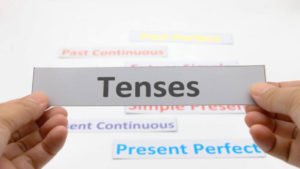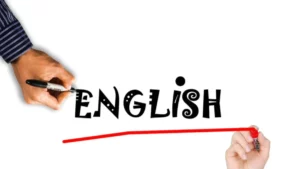The present tense is the most fundamental tense in the English Language. It is used to indicate an ongoing activity or state of being. The present tense, on the other hand, maybe used to describe both past and future actions, which is unique. For example, I swim in the community pool every Sunday.
In this article, we will discuss the four different forms of present tense along with some examples.
What is present simple?
The present simple is the first tense that most English students learn. It may be used to discuss yourself and other people, as well as topics that happen often in the present.
Form
The basic form of the verb is the same in all subject pronouns in the present simple, excluding the third person, which adds an “s” to the end of the verb.
Some places it is used along with examples:

1. Habits
For example:
- I sometimes go to the park.
- I never eat meat.
2. General truths
For example:
- Delhi is the capital of India.
3. Repeated actions or events
For example:
- We drive to school every day
4. Fixed arrangements
For example:
- The van leaves at 8:00 am.
5. Feelings, beliefs, or opinions
For example:
- I love cake.
- I wish to see you soon.
6. Specific instructions
For example:
Other simple present tense examples:
- We board the bus every evening.
- They drive to Shimla every summer.
- She’ll meet you before she vacates.
- We’ll give it to him when he comes.
How do you define present continuous
The present continuous, also known as the present progressive or the present imperfect, is a contemporary English verb form that combines present tense with the continuous component.
Form
Use the verb to be along with the root verb and the suffix.
Some uses along with examples:
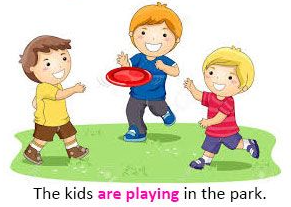
1. Actions occurring at the moment
For example:
- We are learning a new language.
- Look! That boy is eating the display.
2. Fixed plans for the future
For example:
- I’m getting hitched in February.
3. Temporary events
For example:
- She’s staying in Delhi for the moment.
4. To complain about continuous behaviour
For example:
- You are always dumping your clothes on the chair.
Other present continuous examples:
- Are you writing?
- Are they coming to his get together?
- When is she going to the mall?
- I’m not doing that.
- They’re not coming to the movies.
Stative Verbs
Some verbs in the English Language cannot be utilized in the continuous tense. These are known as stative verbs. Stative verbs are used to describe states, feelings, or sensations rather than acts. In these circumstances, the present simple is used instead.
For example:
- It is “I understand him” not I undersanting him”.
- It is “I adore him” not ” I am adoring him”
How is present perfect simple defined?
The present perfect simple connects the present and the past. The timing of the action is frequently uncertain, and the emphasizes the outcome rather than the event.
Form
The auxiliary verb have is used with the past participle of the primary verb.
The past participle of the regular verbs ends in -ed, for verbs like walked, looked, and played. But irregular verbs are written as follows: been (be), made (make), eaten (eat), given (give), got (get), said (say), gone (go) etc.
Furthermore, in the 3rd person, instead of “have”, we use “has”.
Some uses and examples:
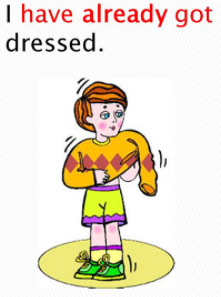
1. Actions that begin in the past and continue in the present
For example:
- I’ve studied here for 10 years.
2. Past life experiences
For example:
- I’ve swum with dolphins.
3. Repeated action in an unspecified time period
For example:
- I’ve visited the Taj Mahal 5 times.
4. Unfinished time
For example:
- I’ve driven my motorbike today.
5. A finished action with a present result
For example:
- I have lost my passkey, so I cannot open the hotel door.
6. A recent past
For example:
- I have just spoken to Randy.
Other present perfect simple examples:
- The boys have played basketball on the school court since 2005.
- I haven’t played at that park in a long time.
- Jim hasn’t worked on Mondays since he left the company.
- My parents haven’t ever gone to Japan.
What is present perfect continuous?
The present perfect continuous is the final form of the present tense. It is used to refer to an action that began in the past but has not yet been completed in the present. The emphasis of this tense is on both the process and the outcome.
Form
Use the auxiliary verb have or has with been the base verb, and add ing. However, verbs like work and life can be used with present perfect continuous or present perfect simple without changing the meaning.
Some uses of the present perfect continuous tense along with some examples:
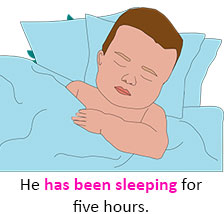
1. Actions that start in the past and are not complete in the present present
For example:
- I have been watching Game of Thrones since last Monday.
2. To emphasize the duration of an event or action
For example:
- Jack has been playing the keyboard since he was five.
3. Recently finished actions that an outcome in the present
For example:
- It’s been raining cats and dogs. So, the ground is damp.
Other Present perfect continuous examples:
- I have been studying this chapter for 10 hours.
- How long have you been playing tennis? Are you are still playing now?
- They have been watching television since 4 o’clock.
- Jack has been feeling sick for a week.
- Roman has been visiting his grandmother every summer since he was a little kid.
- Kunal has been learning the violin for at least 5 years.
- They’ve been staying with their parents for the past 2 months.
Share with your friends

